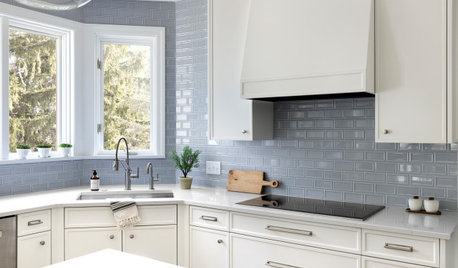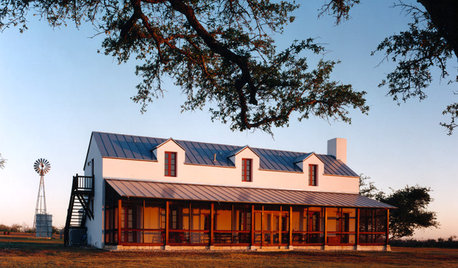How deep to place plumbing
katefisher
16 years ago
Related Stories

KITCHEN DESIGNHow to Choose the Right Depth for Your Kitchen Sink
Avoid an achy back, a sore neck and messy countertops with a sink depth that works for you
Full Story
PRODUCT PICKSGuest Picks: A Deep Blue Bedroom Dream
Make your sleeping space as enchanting as a starry sky with abundant navy and touches of shine
Full Story
DOORSDeep Pockets: Doors with Panache
Pocket Doors Save Space and Create Elegant Transitions Inside and Out
Full Story
HOUSEKEEPING20 Things You Might Be Forgetting to Spring-Clean
Clean these often-neglected areas and your house will look and feel better
Full Story
FEEL-GOOD HOMERejuvenate Your Home With Deep-Rooted Traditions
Give the subtle energies and spiritual side of your home some attention, and watch newfound calm and beauty blossom
Full Story
FARMHOUSESHouzz Tour: German Tradition Deep in the Heart of Texas
Rooted in architecture from the 1800s, this award-winning home mixes history with the vernacular of today
Full Story
COLORRoom of the Day: Deep Blue Proves a Hot Hue
Navy takes a New Jersey living room from dull to dashing in the flick of a paintbrush
Full Story
HOUZZ TOURSHouzz Tour: Victorian's Beauty Is More Than Skin Deep
A London home keeps its historic facade but is otherwise rebuilt to be a model of modern energy-efficiency
Full Story
KITCHEN APPLIANCES9 Places to Put the Microwave in Your Kitchen
See the pros and cons of locating your microwave above, below and beyond the counter
Full Story










dan_martyn
katefisherOriginal Author
Related Professionals
Arlington Handyman · University City Kitchen & Bathroom Remodelers · Citrus Park Kitchen & Bathroom Remodelers · Bloomingdale Kitchen & Bathroom Remodelers · Deerfield Beach Kitchen & Bathroom Remodelers · Eagle Kitchen & Bathroom Remodelers · Jefferson Hills Kitchen & Bathroom Remodelers · Niles Kitchen & Bathroom Remodelers · Olney Kitchen & Bathroom Remodelers · San Juan Capistrano Kitchen & Bathroom Remodelers · Wilson Kitchen & Bathroom Remodelers · Middlesex Kitchen & Bathroom Remodelers · Fairmont Kitchen & Bathroom Remodelers · Cave Spring Kitchen & Bathroom Remodelers · North Chicago Kitchen & Bathroom Remodelerslazypup
dan_martyn